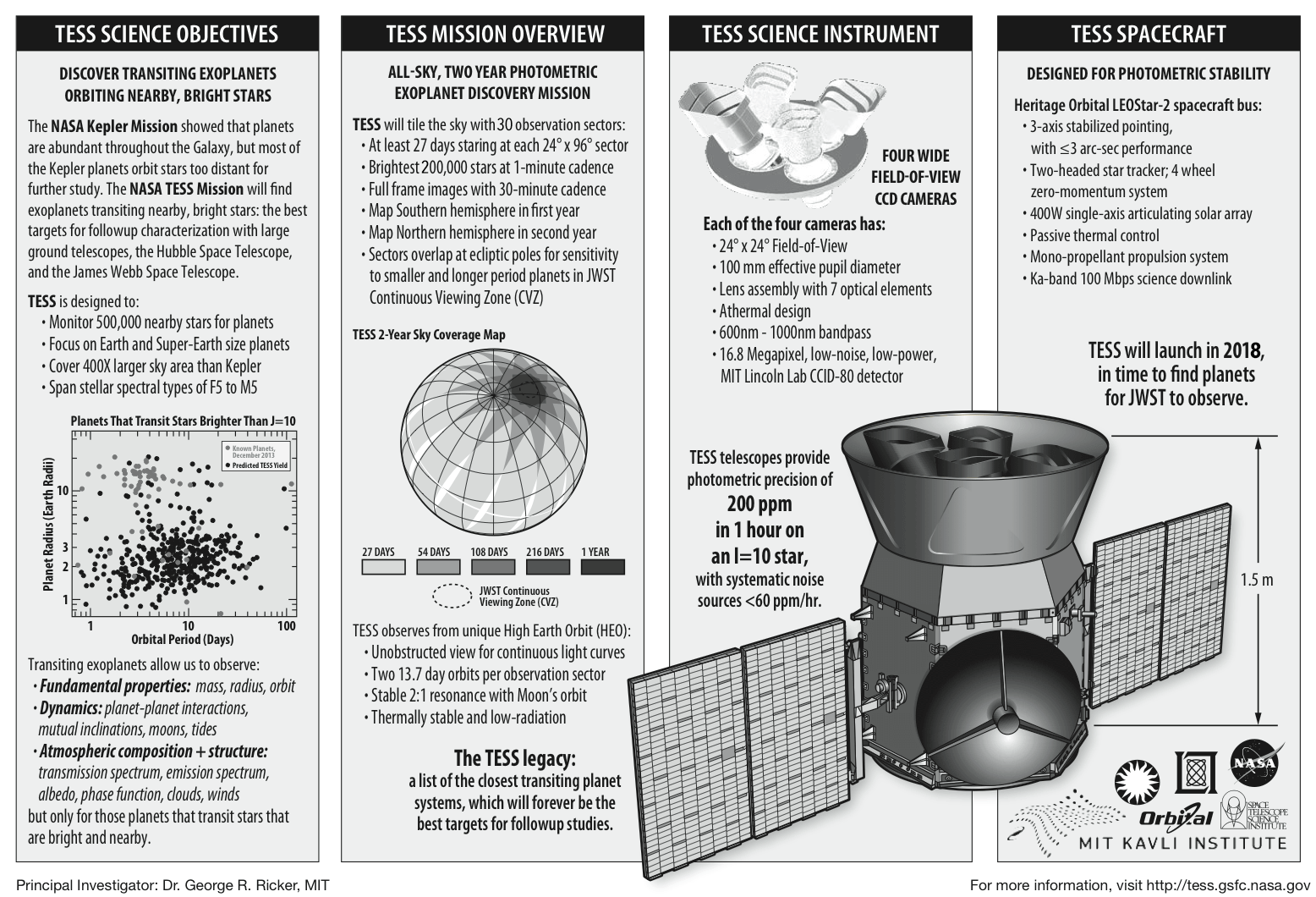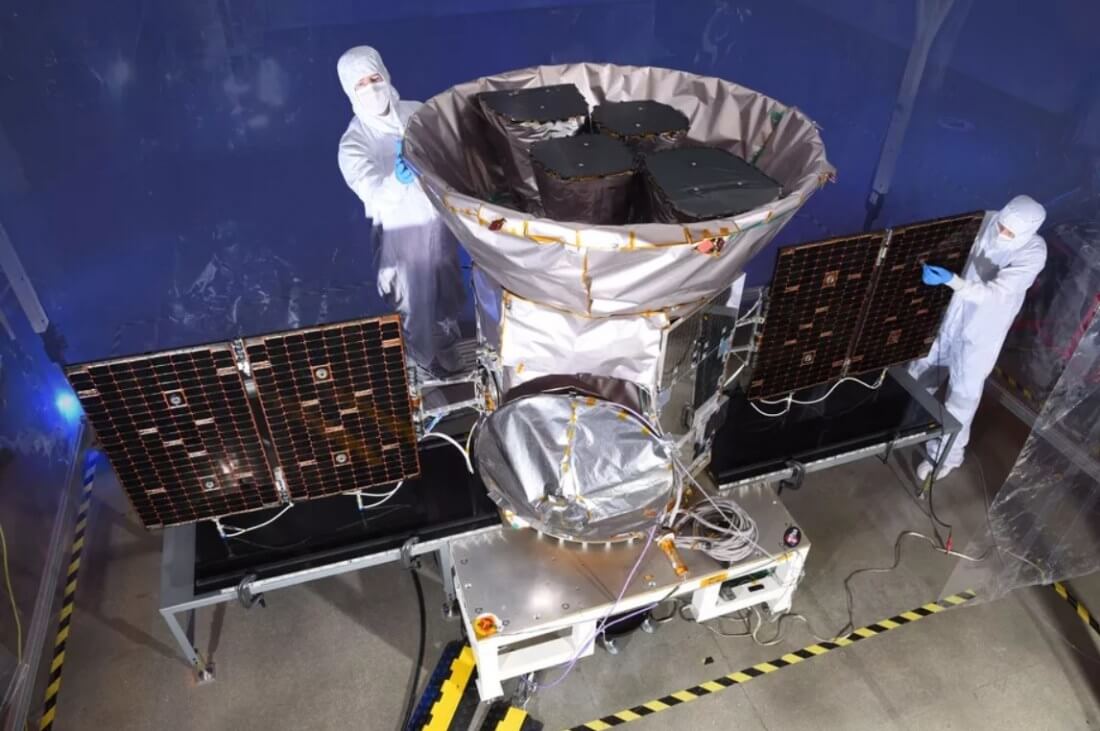NASA will be launching the Transiting Exoplanet Survey Satellite (TESS) next week and its goal is to search for distant, Earth-like planets. The mission will help scientists understand what these planets are made of and if they are suitable for sustaining life. TESS will be replacing the aging Kepler Space Telescope, which is scheduled to run out of fuel in the next few months.
The satellite is scheduled to launch on April 16th aboard a SpaceX Falcon 9 rocket and will take a few months to reach its final orbit. It will be positioned such that its orbit comes close to the Moon. This allows the Moon's gravity to help correct any small errors in TESS' orbit.

NASA expects to start doing measurements with TESS as early as June of this year. To detect distant planets, TESS will use the transit method as its name suggests. As planets orbit their stars, they block out a portion of the star's light when they come in between the star and the satellite. The instruments aboard TESS are designed to measure this difference in light.
Although TESS and Kepler have similar goals, their methods are very different. Kepler was aimed at a small patch of sky for a long time in an attempt to discover as many planets as possible. TESS, on the other hand, will change its orientation roughly every two weeks to allow it to see almost the entire night sky. From there, it will take a more focused approach by only analyzing planets that may support life.

In combination with the upcoming James Webb Space Telescope and ground based systems, TESS will be able to determine the size, density, orbit, and composition of the planets it is observing. TESS is currently scheduled to have a two-year long mission although it is likely the mission will be extended.